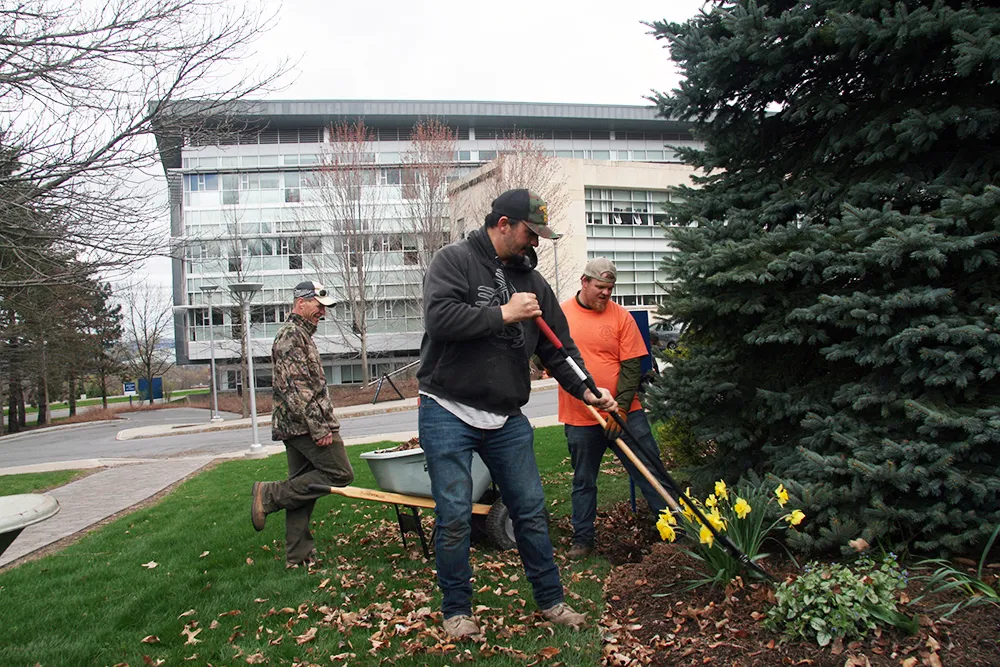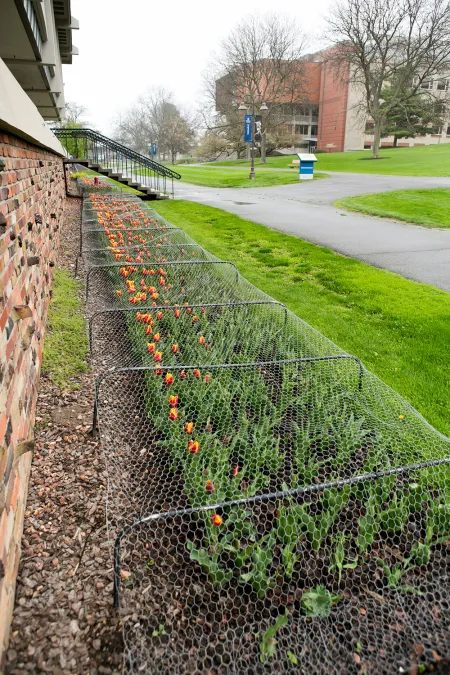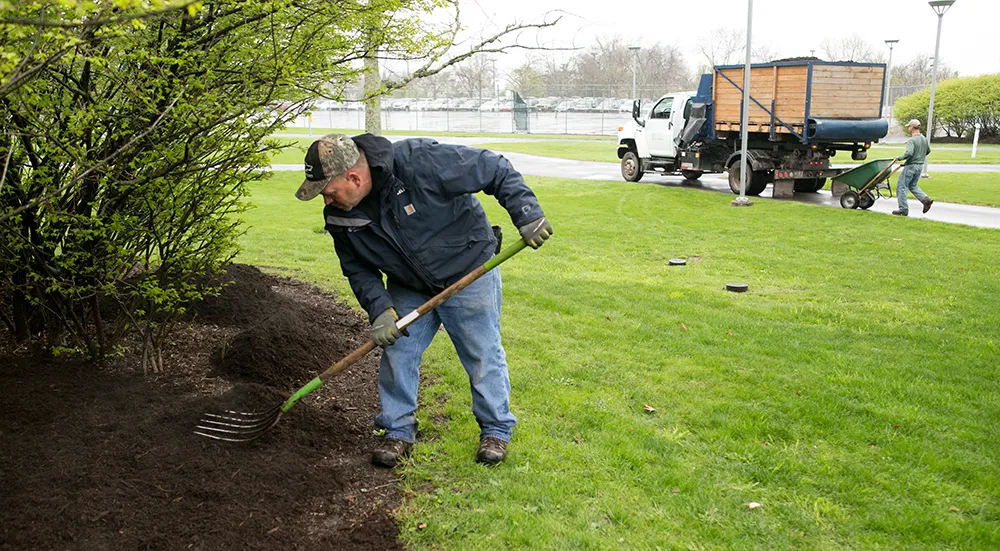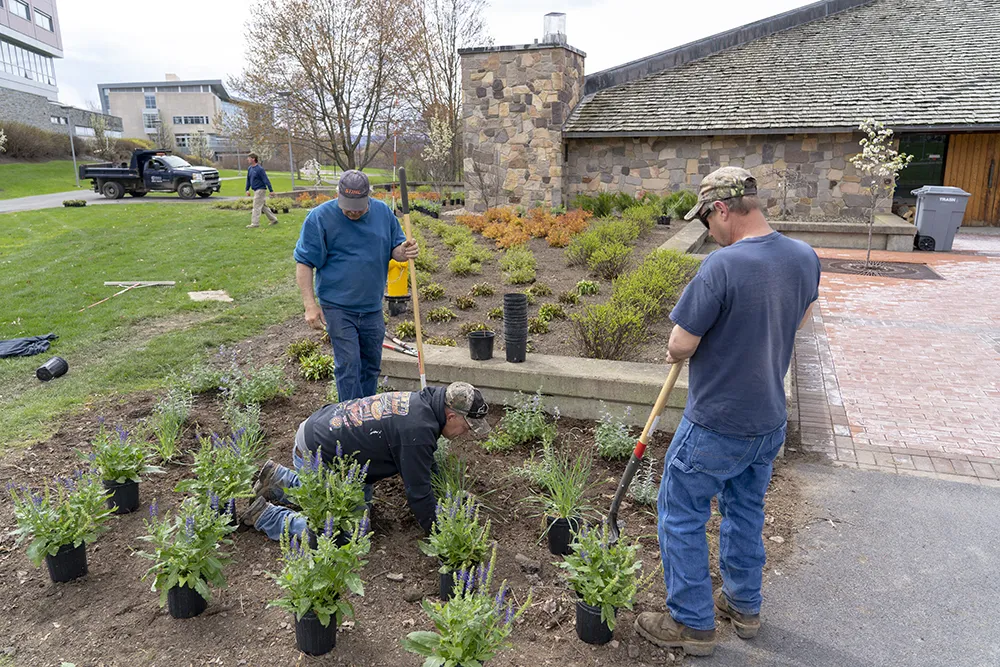On commencement day at Ithaca College, flowers bloom in every freshly mulched bed. Leafy tree canopies shade lawns trimmed to uniform heights carpeting each quad and lawn. And the Dillingham fountain waters dance before a postcard valley hugging the long finger of Cayuga Lake.
Of course, this idyllic scene will be somewhat grayer if the weather isn’t cooperating. And that’s the nature of commencement preparation as well — dependent upon the peculiarities of the weather and area wildlife, whose wily behaviors evolve from season to season. But each year, the two-dozen members of the Ithaca College grounds crew rise to the occasion.
“The most important thing to understand about our commencement preparation is that we try to clean and mulch and beautify the entire campus from one end to the other,” said Ernie McClatchie ’01, executive director of maintenance, grounds and transportation. “We will work all hours to ensure we get things done.”




